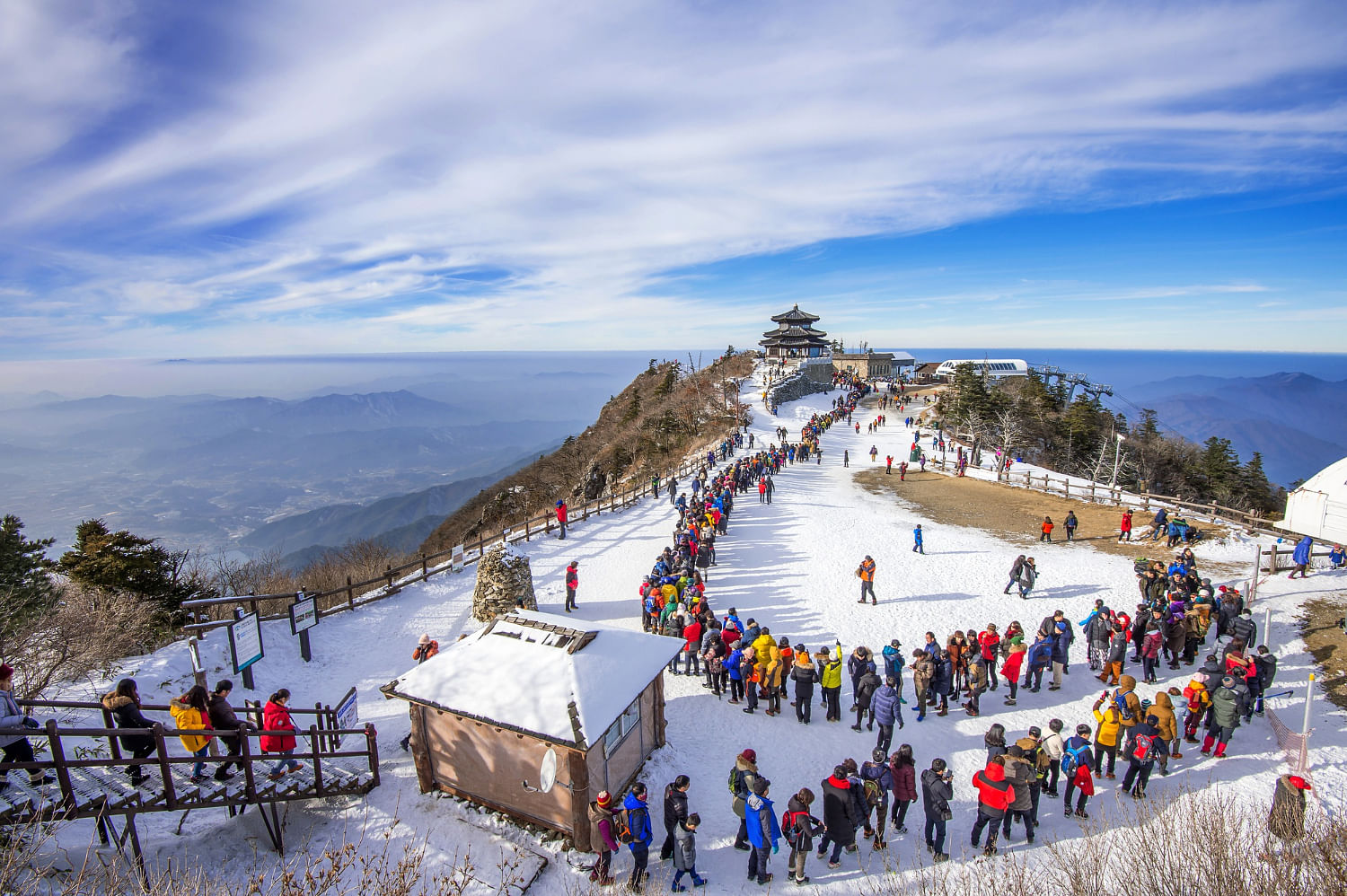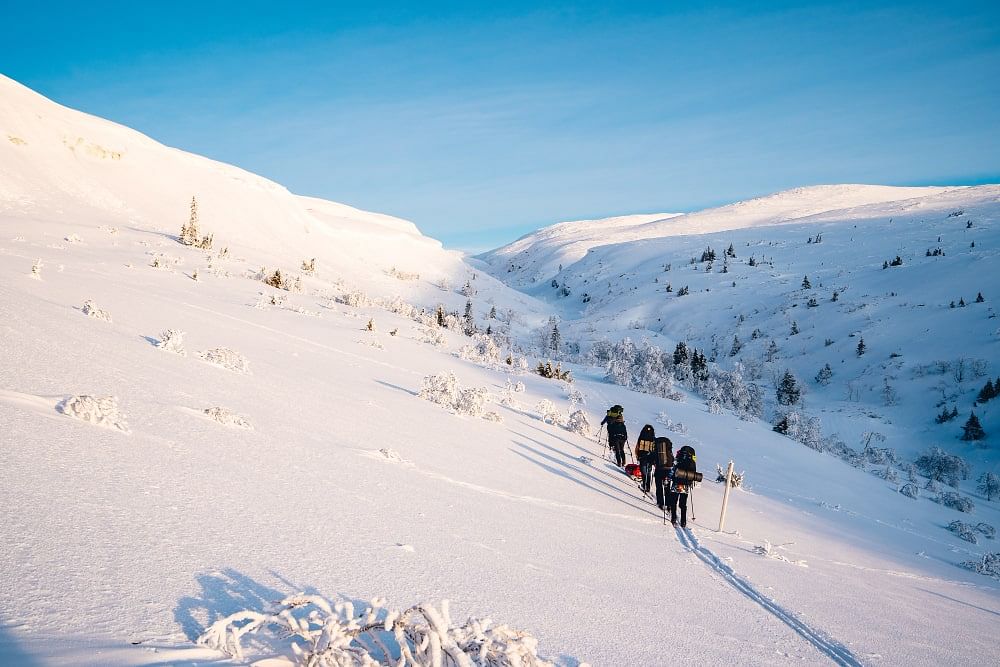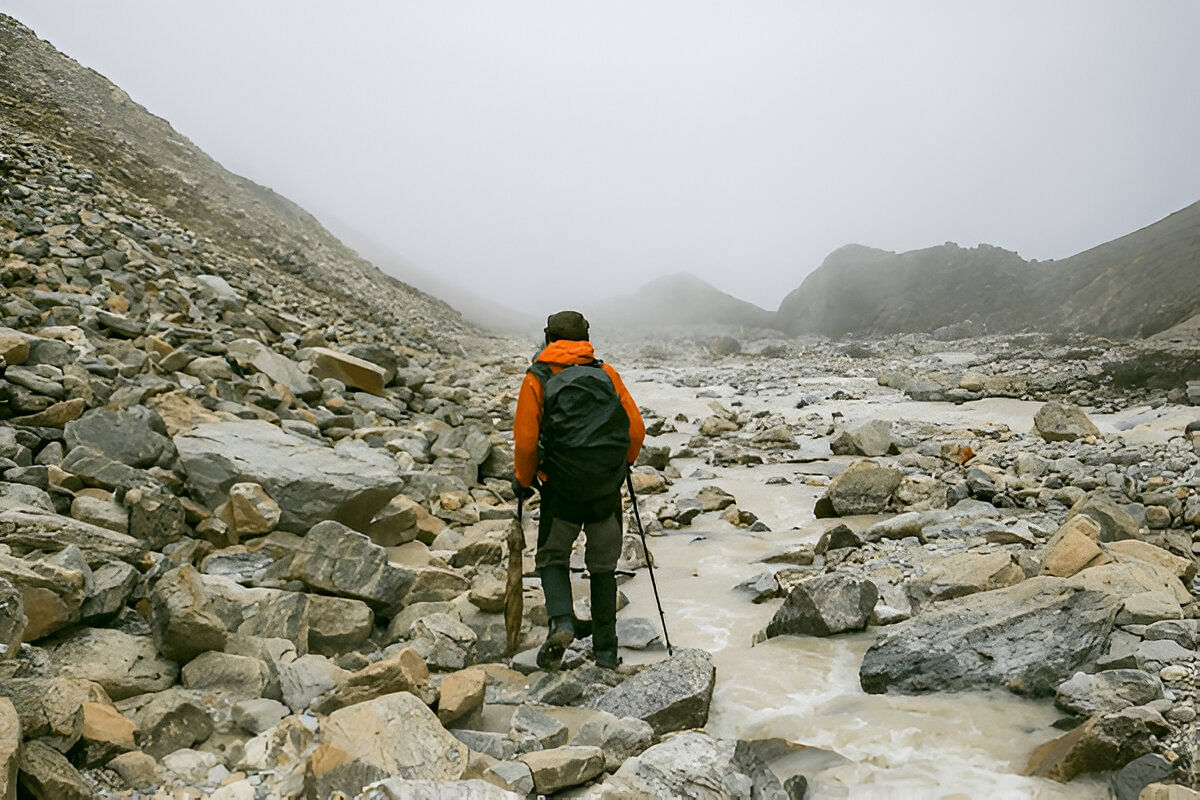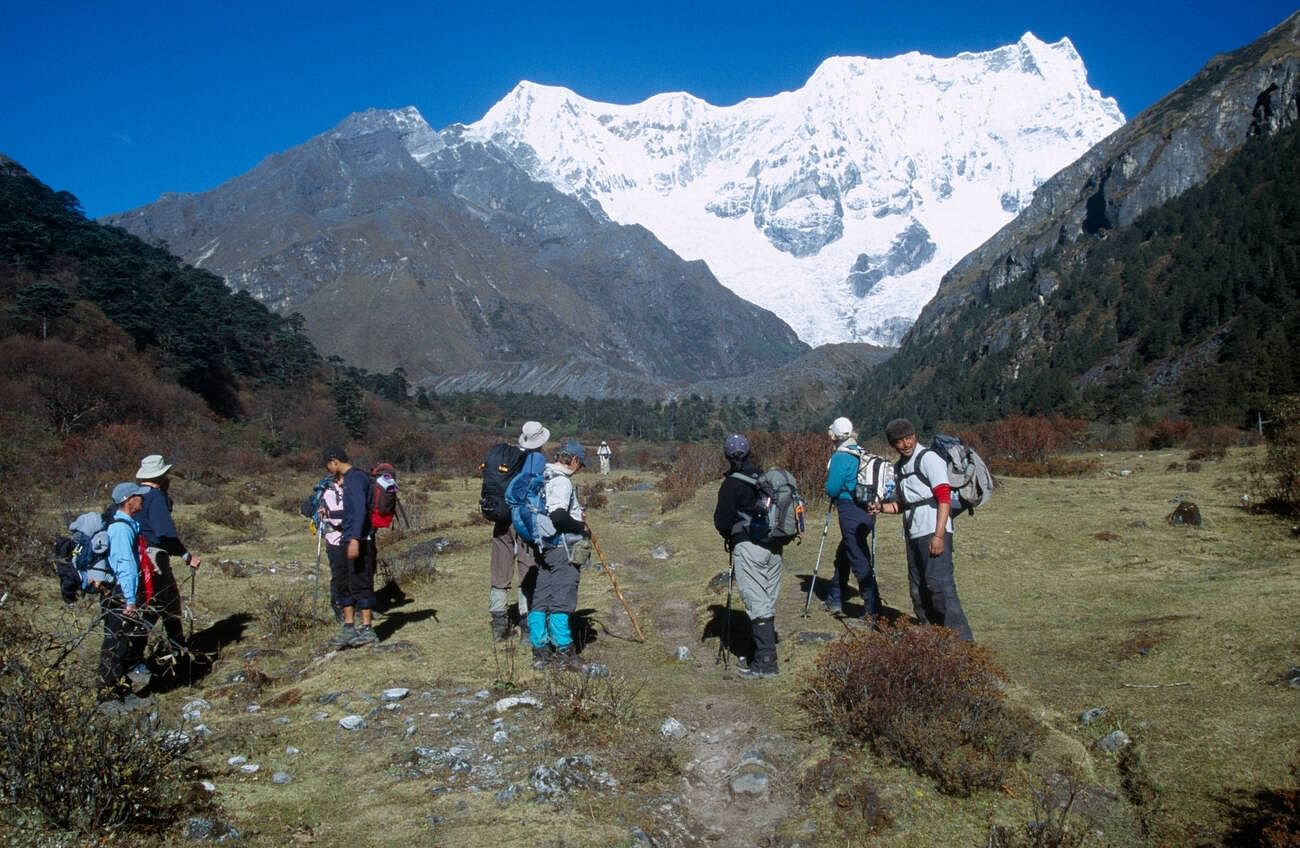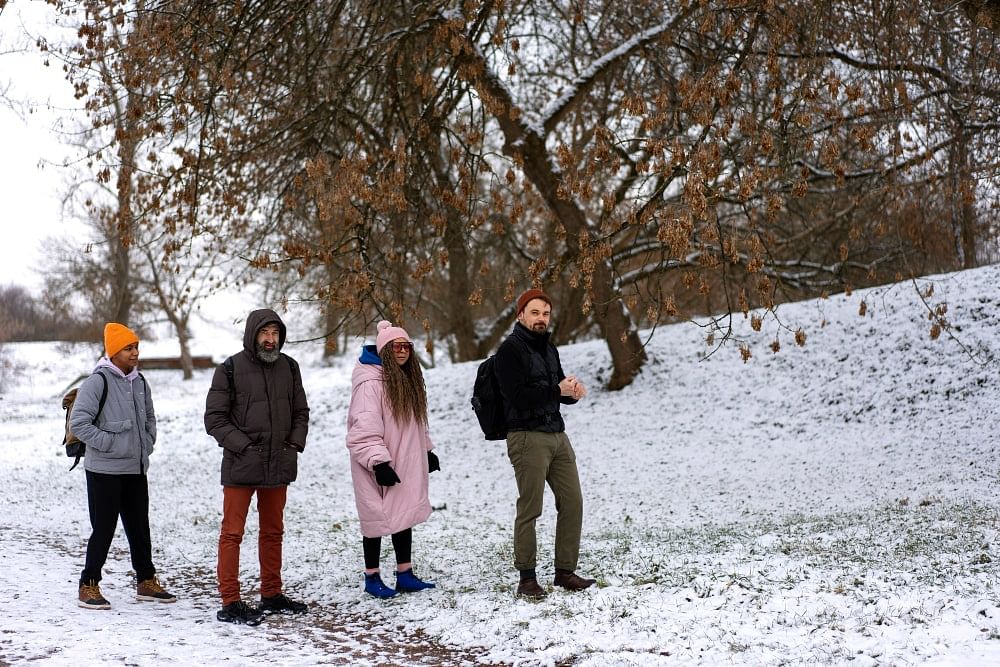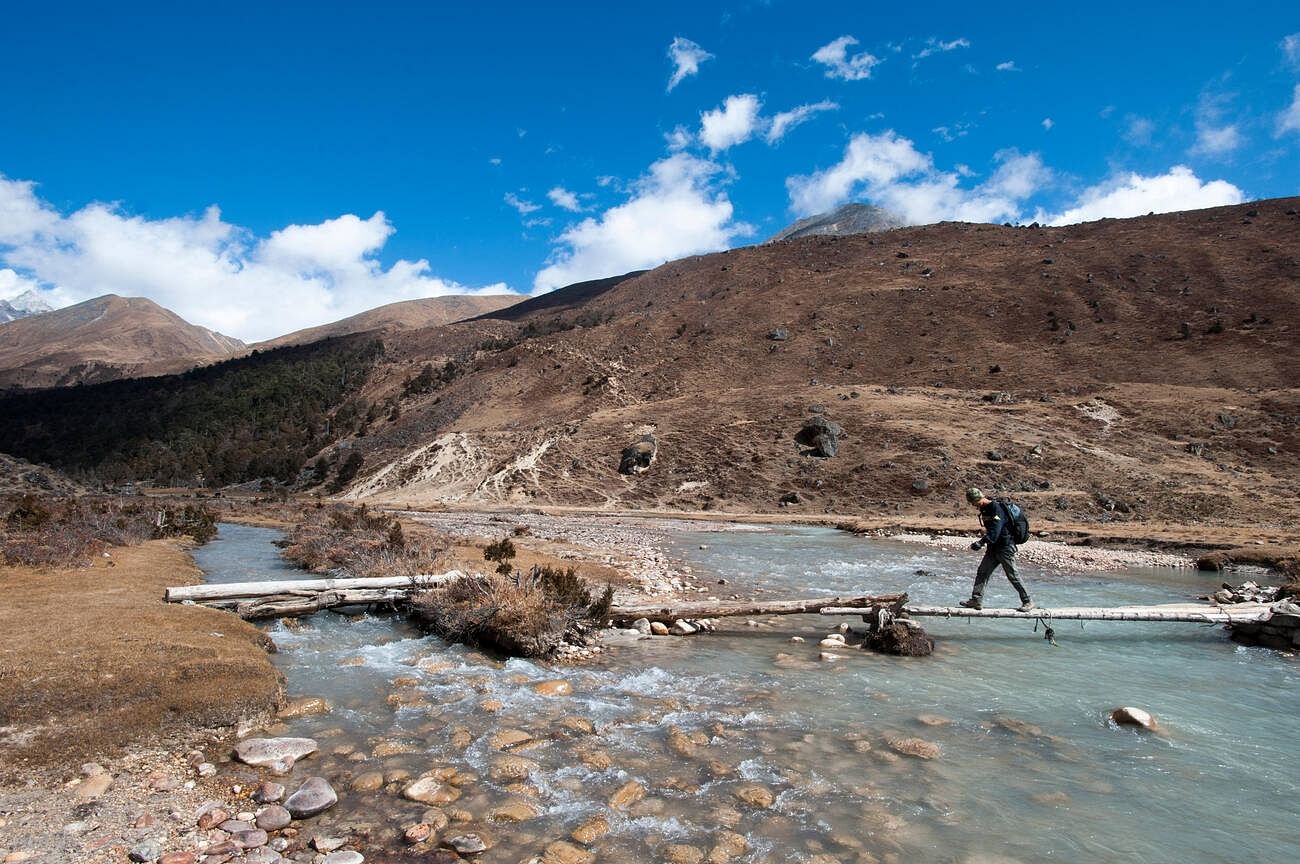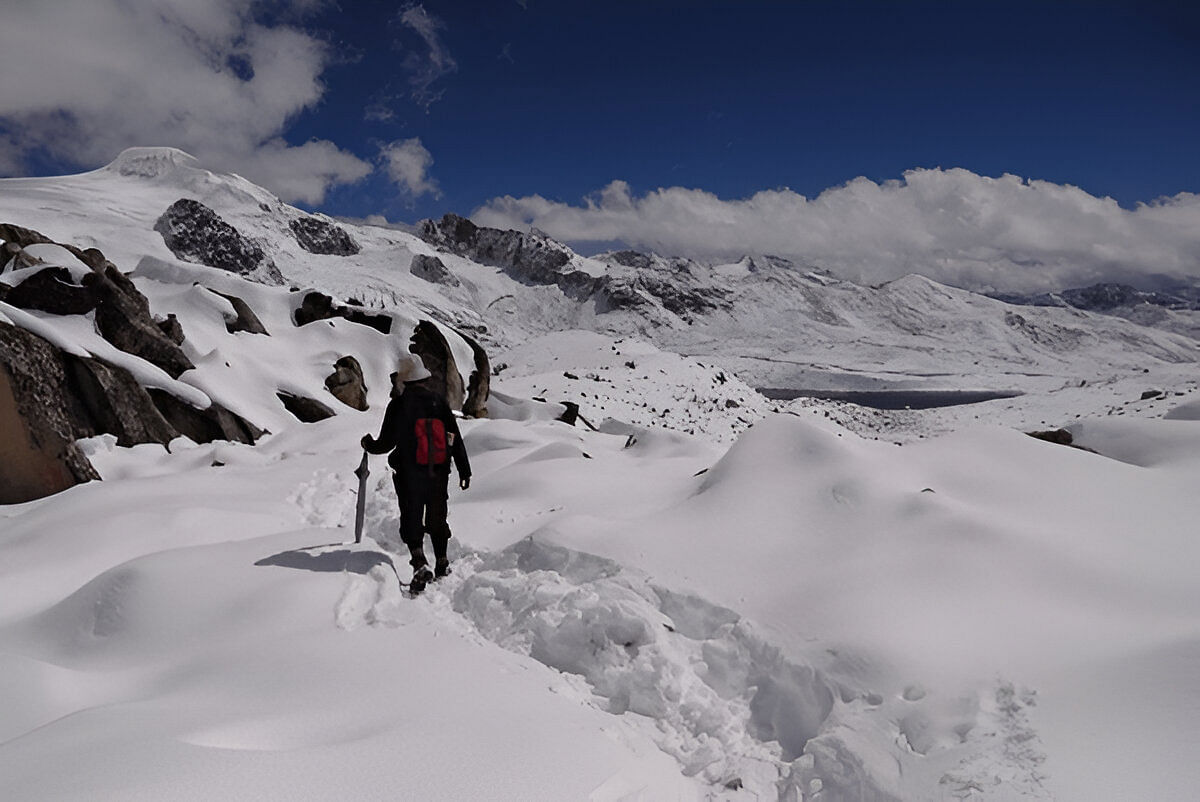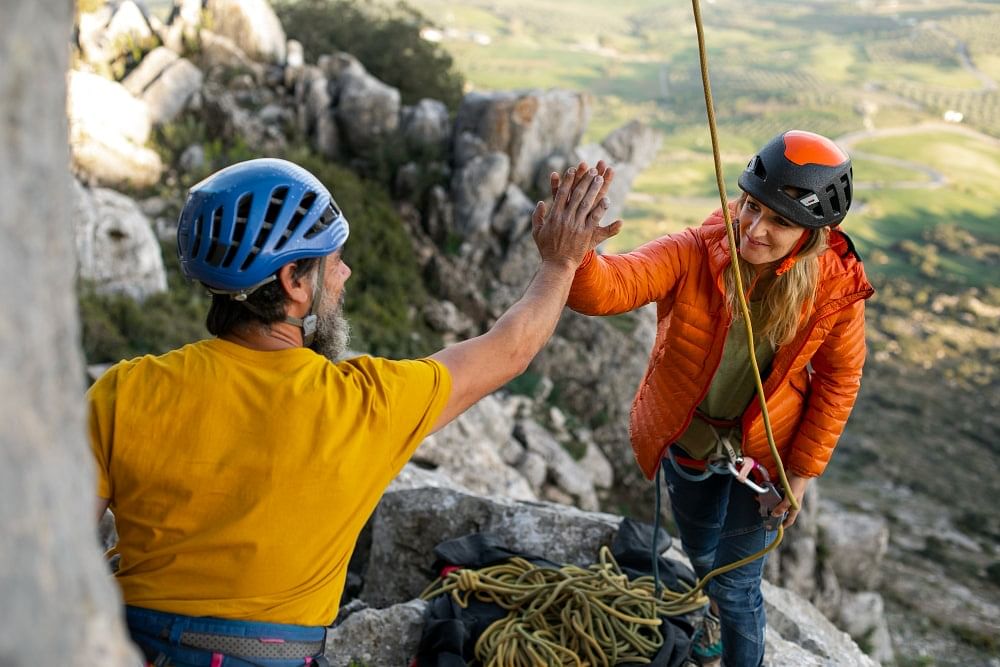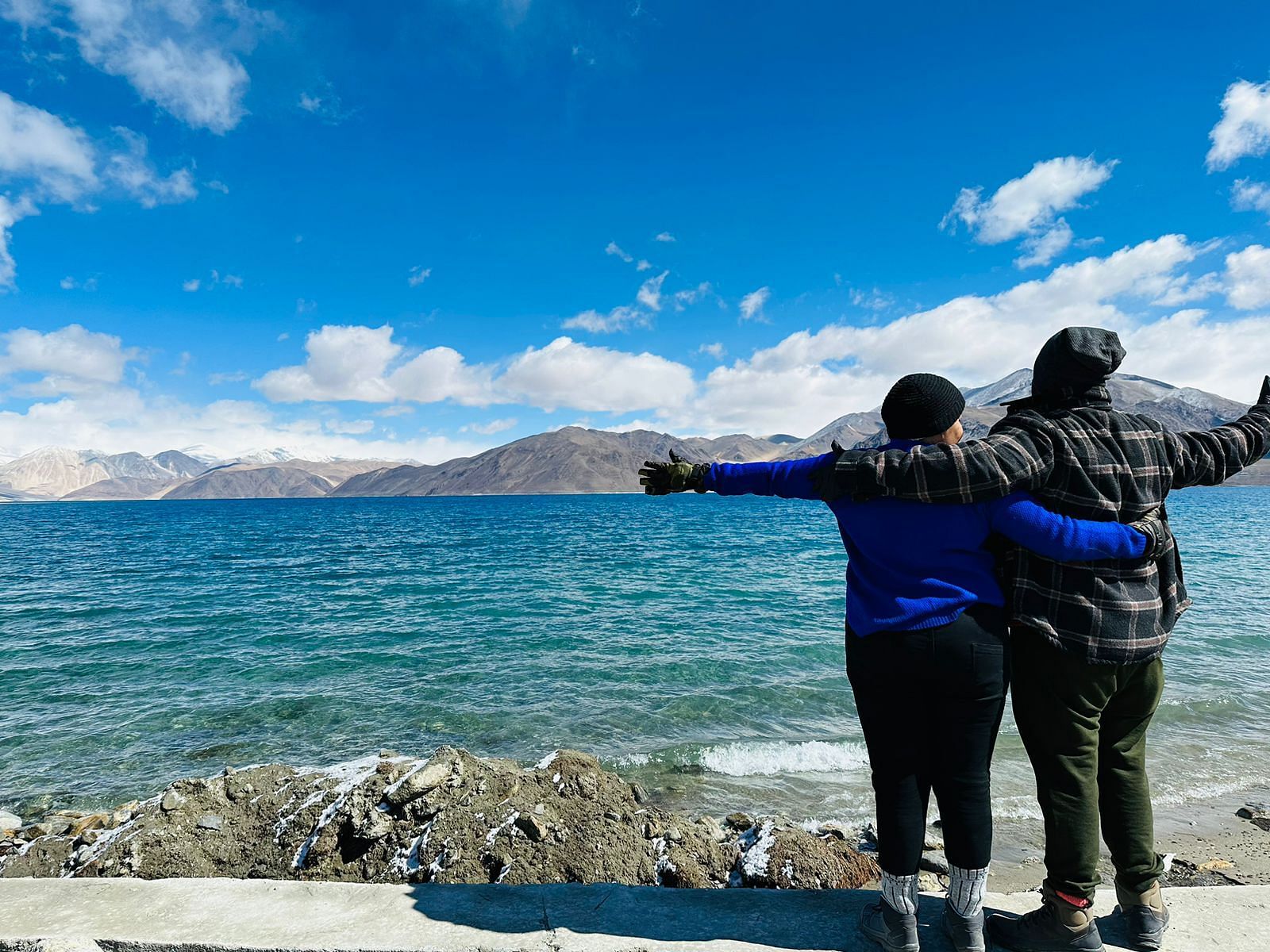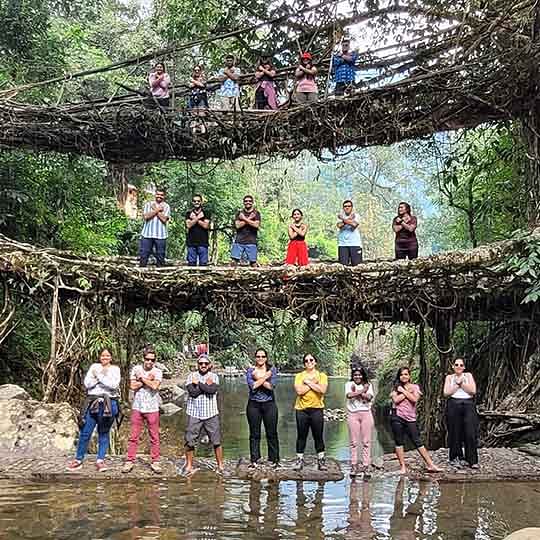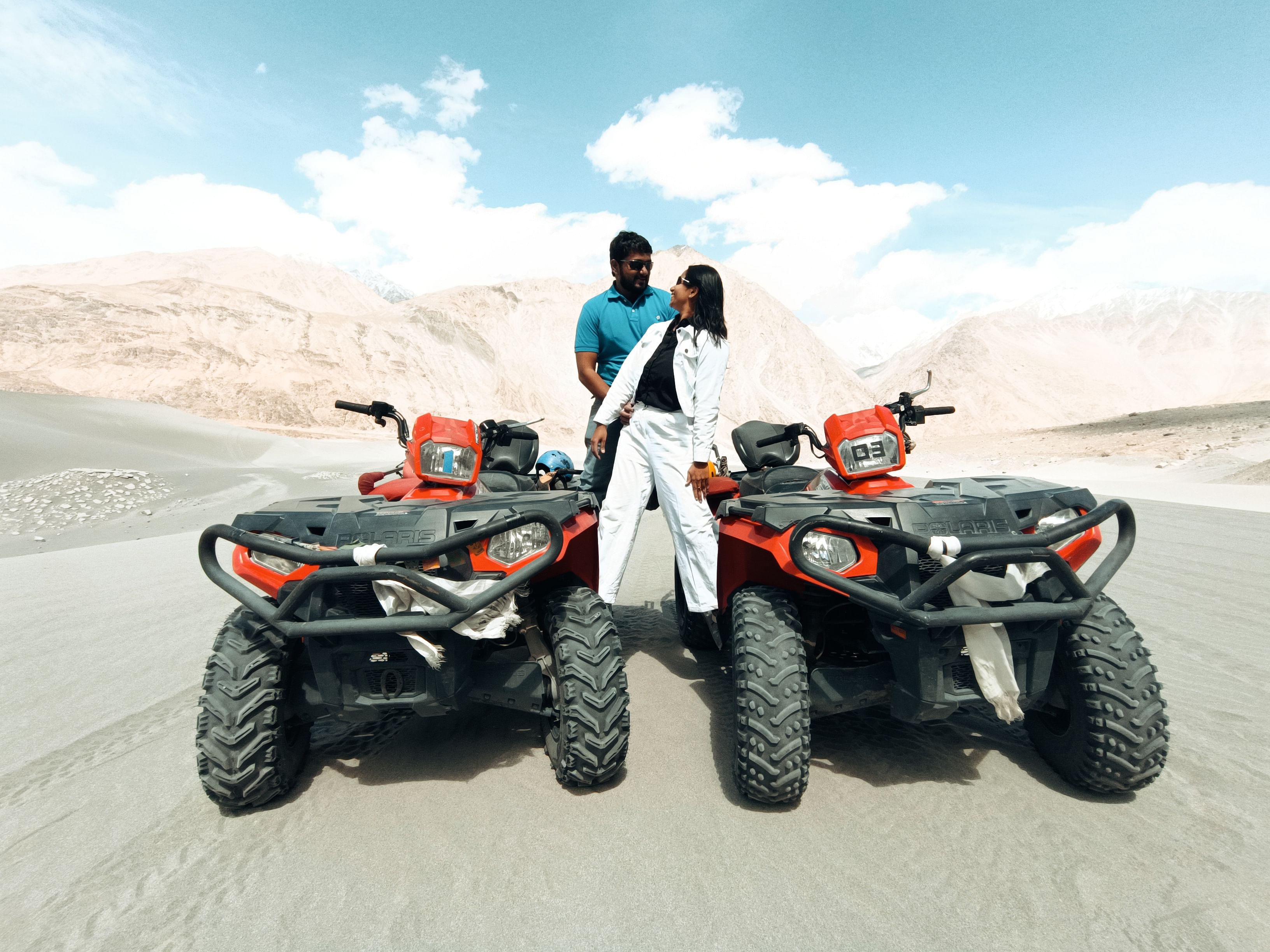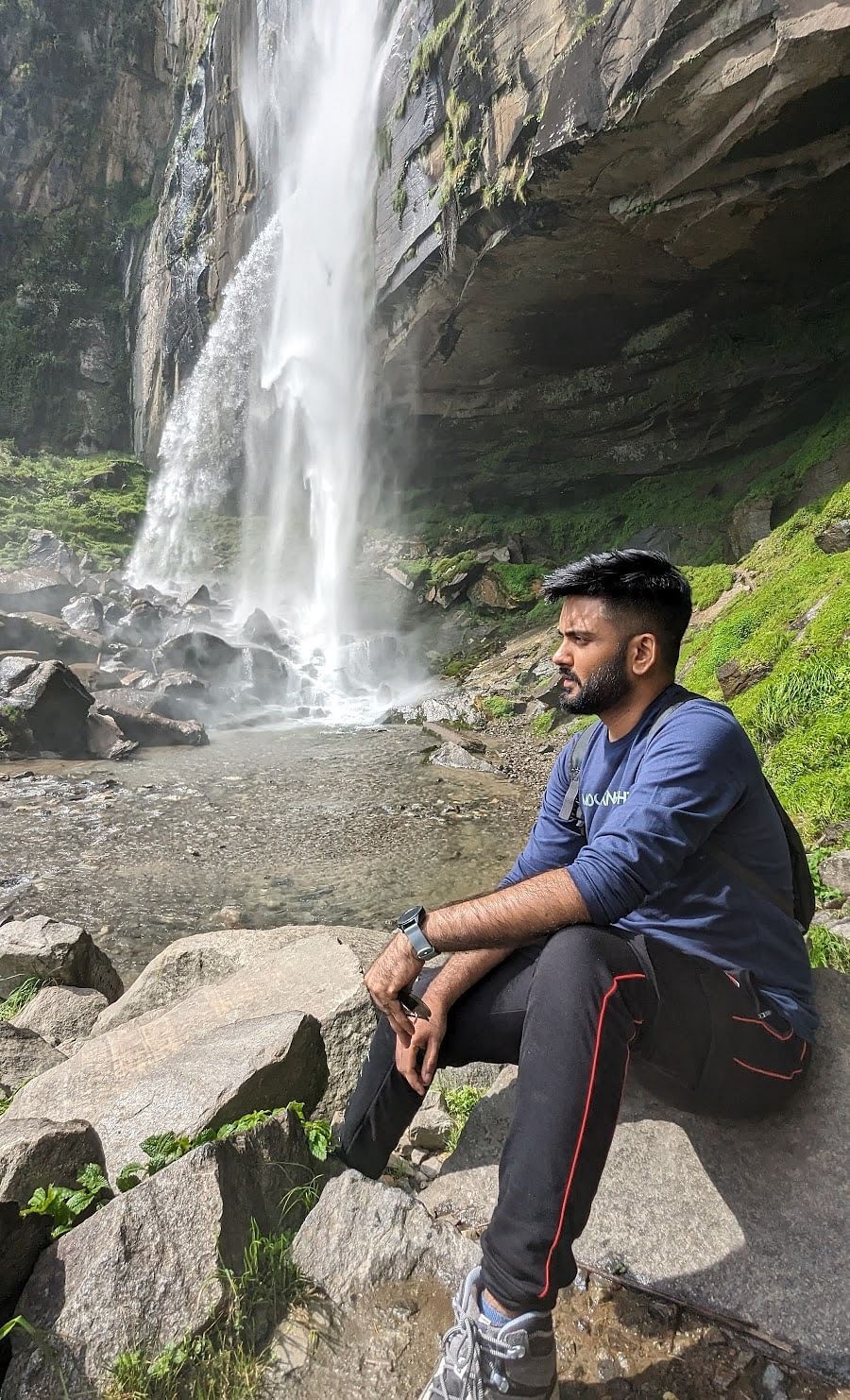Getting to walk the Snowman Trek is like winning the lottery for mountain lovers - it's one of Bhutan's most incredible adventures. Sure, it's challenging, but the rewards are absolutely worth it.
This trek takes you way up into the mountains, crossing passes that are over 5,000 meters high. We're talking about 20-25 days of walking through places where hardly anyone goes. You'll need to be in great shape and know what you're doing in the mountains.
The scenery is just totally mind-blowing, though. You're close to giant peaks such as Gangkar Puensum, trek through valleys that are untouched by time, and have the type of silence you just cannot find elsewhere. It's surely one of the most intense things to do in Bhutan.
September and October are your best bet for good weather. Not many people try this trek each year, so it's pretty exclusive. If you're considering doing this challenge, our Bhutan tour packages can organise all the planning and ensure that you're well set up for this incredible mountain adventure.
Key Highlights Of Snowman Trek Bhutan
- Typical duration: 25–30 days.
- Some itineraries run 24 days from Paro, or 23 days via Punakha (trims 4 days).
- Shorter segments (18 days) exist, but the full trek is about a month
- The trek is classified as a difficult category.
- The maximum altitude that is touched during this trek is 5300m.
- The number of walking days is 27 days, where 3 days are solely for rest.
- During the trek, you cross 11 high passes.
Also Read: Bhutan Road Trip Package
Best Time to Do the Snowman Trek
The Best Time to do the Snowman Trek is autumn (late September to early November). During this time, the skies are clear, temperatures are stable, and there is less rain or snow on the high passes.
Some trekkers go in late spring (May–June), but the weather is less predictable, with possible heavy snow on the passes. Winter (December - February) is too dangerous due to heavy snow, while summer (June - August) has heavy monsoon rains, which wash out trails and make river crossings risky.
If you want the best views, stable weather, and safe trails, aim for the Best Time to do the Snowman Trek, which is autumn.
The Snowman Trek is not for beginners. You need good fitness, strong willpower, and experience with long treks. The challenges include:
- High altitude (often over 5,000 meters)
- Cold weather and sudden storms
- Very remote areas with no rescue roads
- Long days of walking (6–8 hours daily)
- Sleeping in tents for weeks
If you are not sure you can handle it, you should try an easier trek in Bhutan first, like the Jomolhari Trek or Druk Path Trek, before attempting this beast of a trail.
Snowman Trek Cost and Tour Packages
- Prices range from INR 6,54,415 – 12,75,000 per person, depending on group size and operator.
All packages generally cover:
- Bhutan visa & SDF
- Trek permits
- Guide, cook, porters/horse support
- Camping equipment
- Meals and simple lodging
- Internal transport & emergency backup
- International airfare is extra.
Expect to pay ₹6 Lakh to ₹16 Lakh for the full 25–30 day Bhutan Snowman Trek, depending on operator, group size, and comfort level. These packages are expensive, but they include almost everything except international flights and personal gear.
Snowman Trek Itinerary (Typical 27-Day Outline)
Day 1–2: Paro & Acclimatisation
Day 3: Paro to Shana
- Drive to the trailhead, then hike through pine forests along the Paro Chhu river to Shana camp.
Day 4: Shana to Soi Thangthangkha
- Trek through rhododendron and oak forests with views of high, snowy peaks.
Day 5: Soi Thangthangkha to Jangothang
- Climb to Jangothang base camp, famous for its view of Mount Jomolhari.
Day 6: Rest at Jangothang
- Acclimatisation day with short hikes around yak herder camps.
Day 7: Jangothang to Lingshi
- Cross the Nyile La pass (nearly 4,900 m) to reach the remote village of Lingshi.
Day 8: Lingshi to Chebisa
- An easier day to the pretty village of Chebisa, with a beautiful waterfall nearby.
Day 9: Chebisa to Shomuthang
- Climb over Gogu La pass and descend to the yak pasture at Shomuthang.
Day 10: Shomuthang to Robluthang
- Cross the Jhari La pass, then trek into a scenic valley.
Day 11: Robluthang to Lingmithang
- Cross the highest pass so far, Sinche La (5,005 m), and enjoy glacier views before camp.
Day 12: Lingmithang to Laya
- Enter Laya, a village famous for its unique local culture and traditional hats.
Day 13: Rest in Laya
- Explore Laya village, meet locals, and acclimatise for the higher passes ahead.
Day 14: Laya to Rodophu
- Trek up a quiet river valley with yak herders’ camps.
Day 15: Rodophu to Narethang
- Climb to Narethang camp at about 4,900 m with stunning Himalayan scenery.
Day 16: Narethang to Tarina
- Cross Gangla Karchung La pass, then descend into forests and meadows.
Day 17: Tarina to Woche
- Pass through Lunana’s remote villages, with fewer trekkers on these trails.
Day 18: Woche to Lhedi
- Hike through high meadows and traditional stone villages.
Day 19: Lhedi to Thanza
- Follow the Pho Chhu river to reach Thanza, one of Lunana’s biggest settlements.
Day 20: Rest at Thanza
- Take a rest day and explore local lifestyles or do short hikes nearby.
Day 21: Thanza to Danji
- Climb up to higher yak grazing areas with grand mountain views.
Day 22: Danji to Tshorim
- Cross one more challenging pass and camp near glacial lakes.
Day 23: Tshorim to Geshe Woma
- Trek through Lunana’s wilderness, where few outsiders ever go.
Day 24: Geshe Woma to Warathang
- Cross another pass with epic views, then descend through alpine forests.
Day 25: Warathang to Dur Tsachu
- Reach Bhutan’s hidden hot springs at Dur Tsachu, a welcome treat for tired legs.
Day 26: Dur Tsachu to Tshochenchen
- Trek through yak-grazing lands and thick forests.
Day 27: Tshochenchen to Bumthang
- Last day of the trek, hike down to a road near Bumthang, and transfer to a hotel.
Key Points About This Itinerary:
- Covers 11 high passes (many over 4,500 m)
- About 300–356 km total distance
- 25–30 days is standard
- You camp every night (no guesthouses)
- Must be guided by a Bhutan-licensed operator
Also Read: Complete Bhutan Tour Package
How to Pack for the Snowman Trek
Pack smart for the Snowman Trek:
- Strong, weatherproof 60–75 L backpack with rain cover for all your items.
- A down sleeping bag rated to at least –15°C
- An inflatable or foam sleeping mat for insulation from the cold ground
- Base layers (synthetic or merino wool tops and bottoms)
- Mid layers (fleece jackets, light down sweaters)
- Outer layer (hard shell jacket & pants, waterproof and windproof)
- Warm, insulated down jacket for evenings
- Trekking pants (2 pairs)
- Long-sleeved shirts (2–3)
- Thermal leggings
- Gloves (warm plus liner gloves)
- Warm hat and sun cap
- A buff or scarf for neck protection
- Sturdy trekking boots (broken in before the trek)
- Camp shoes or sandals for evenings
- Multiple pairs of warm trekking socks
- Sunglasses with UV protection
- Sunscreen and lip balm with SPF
- Headlamp with spare batteries
- Trekking poles
- Quick-dry towel
- Personal toiletries (biodegradable soap, toothpaste, toilet paper)
- Wet wipes for sponge bathing
- Personal medications
- Blister treatment kit
- Small first aid kit (bandages, antiseptic, etc.)
- Diamox (only after doctor’s advice, for altitude)
- Water purification tablets or a filter
- Energy bars
- Trail mix
- Electrolyte powders (recommended at altitude)
- Reusable water bottles or hydration bladder (minimum 2 L capacity)
- Waterproof dry bags for valuables
- A camera or a phone with enough storage
- Spare power bank (though there is little or no network)
- Travel documents, copies of your permit, and a small notebook
- Lightweight book or cards for the rest days
- Small sewing kit
- Duct tape for repairs
- Extra ziplock bags for organising items
Most operators provide tents and cooking gear, but always check before you book.
Internet and Connectivity
Be ready to be off the grid. There is no phone signal in most parts of the Snowman Trek. Some villages in Bhutan, like Laya, might have a weak signal, but you cannot depend on it. Guides often carry a satellite phone for emergencies.
Since the Snowman Trek is so demanding, here are some practical tips:
- Train Your Body Early: Start 2–3 months before the trek with long hikes carrying a backpack, and gradually increase your walking hours and elevation gain.
- Practice on Uneven Trails: Train on rough, rocky, or hilly paths so your ankles, knees, and legs get used to mountain conditions for the Snowman Trek Bhutan.
- Build Cardio Fitness: Add running, swimming, or cycling to your weekly routine to improve your heart and lung strength for the high altitude of the Bhutan Snowman Trek.
- Strengthen Your Legs: Do squats, lunges, and step-ups to build muscle power in your thighs and calves, which will help on steep climbs.
- Train With a Backpack: Practice carrying 8–10 kg on training hikes to prepare for the weight of your gear during the trek.
- Altitude Familiarisation: If you can, do a shorter Trekking in Bhutan trip at altitude before starting the Snowman route, to help your body adjust.
- Learn About Altitude Sickness: Understand the symptoms of AMS (acute mountain sickness), so you can recognise and report them early during the Snowman Trek Bhutan and keep yourself safe.
- Pack Quality Gear: Buy good trekking boots and break them in well before you go; test your clothes and sleeping bag in cold conditions.
- Check Your Health: Get a medical check-up, especially for your heart and lungs, and talk to a doctor about altitude medication if needed.
- Plan Your Travel Insurance: Always buy insurance covering high-altitude trekking and helicopter rescue, which is essential on the Bhutan Snowman Trek, since remote areas have no hospitals.
- Mental Readiness: The Snowman Trek is long and tough - practice staying positive, flexible, and ready for weather or plan changes.
- Hydration Habits: Get used to drinking 3-4 L of water a day during training, since good hydration helps with altitude adjustment.
- Research Bhutan Culture: Before your Snowman Trek Bhutan, learn a bit about Bhutanese customs so you respect local traditions along the trail.
- Choose a Trusted Operator: Always book through a Bhutan-licensed guide with experience on the Snowman Trek Cost and Tour Packages, for better safety and support.
Always choose a reliable Bhutanese tour operator who has handled Snowman Trek groups before. Their experience is priceless if bad weather or emergencies happen.
The Snowman Trek is not just a trekking route. It is a test of your spirit, endurance, and love of nature. Every day on this trail is a reminder of how wild and wonderful our planet can be. Bhutan’s highlands will challenge you, humble you, and change you.
For those who are ready, the Snowman Trek Bhutan will reward you with memories far beyond normal tourism. Mountains, wildlife, culture, and pure adventure — it is all there, waiting for you to explore.
Book with a licensed Bhutanese company, train well, pack smart, and go with an open heart. The Snowman Trek will push your limits, but also show you a hidden, magical side of Bhutan that few people ever see.




